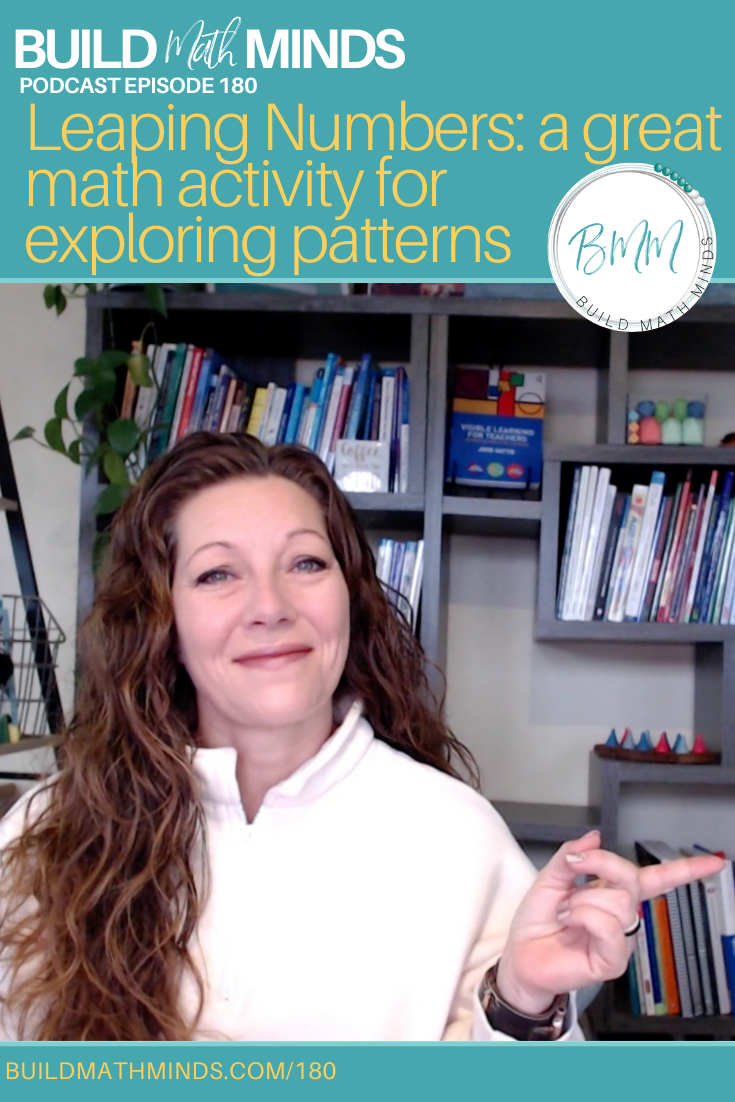Steve Wyborney’s Leaping Numbers
Steve Wyborney’s Season 1 of Leaping Numbers on YouTube
Welcome fellow Recovering Traditionalists to Episode 180 – Leaping Numbers: a great math activity for exploring patterns
There used to be specific standards in certain grade levels involving having students do activities involving patterns with numbers.
The structure of our number system creates many amazing patterns and connections. And some educators were concerned when the new standards came out back in 2010 because there weren’t specific grade level standards for exploring standards.
The reason for this is because students should be doing it at ALL grade levels and therefore it was included in the Standards of Mathematical Practice. The Standards of Math Practice are the three pages before the grade level standards that line out the 8 items students should be doing to engage in the practice of mathematics. Math Practice #7 is Look for and make use of structure. It states that “Mathematically proficient students look closely to discern a pattern or structure.”
Students need to always be looking for patterns, applying them, and making conjectures based upon their discoveries, like “When we add 1, it’s always the next number when we count” or “6×5 is the same as 5×6 and 4×3 is the same as 3×4, so if we switch numbers around when multiplying it doesn’t matter, the answer stays the same.” Math Practice #7 is about opening up the mathematics so that students have the opportunity to discover and USE patterns, properties, and connections to become more flexible thinkers.
And if you need a new, fun way to explore patterns with your students I want you to check out Steve Wyborney’s newest activity: Leaping Numbers. When this podcast gets released, all the Leaping Numbers for Season 1 will be released but I checked with Steve and they will be available on YouTube and his website. For an explanation of Leaping Numbers, I’m pulling straight from the email from Steve:
There are 20 short videos. Each one has a mystery pattern with a missing number – which turns into a clue. As the clues build up a new Mystery Pattern emerges leading to: “What is the final number on Day 21?” The challenge for everyone is to try to find the Mystery Number (in Day 21) before it is posted on November 21.
With each pattern, you’ll pick up another clue. As the clues come together, you’ll discover the pattern… and it will lead you to the answer in Day 21.

As I said, all the Leaping Numbers have already been released so you can’t try to do the challenge of figuring out the bigger number pattern before all the patterns get released but you can still work through all the Leaping Numbers with your students AND I’d highly recommend getting on Steve’s email list or subscribing to his YouTube channel so you get notified when Season 2 gets released so you and your students can be a part of the challenge right when it comes out. Steve told me he is planning on releasing it in February. So start working on Season 1 now…in fact it might just be a great activity to keep your students engaged as we get closer to the holiday break PLUS you get to help your students work on Math Practice #7 Look for and make use of structure.
Alright my fellow Recovering Traditionalists, until next week keep building math minds!




